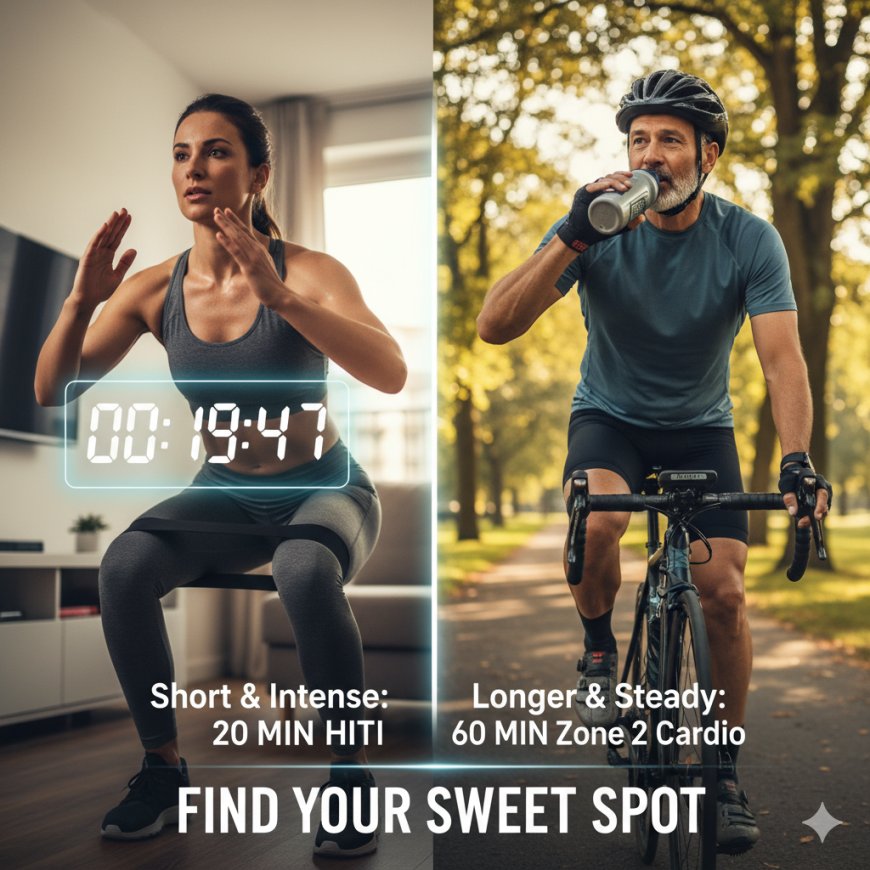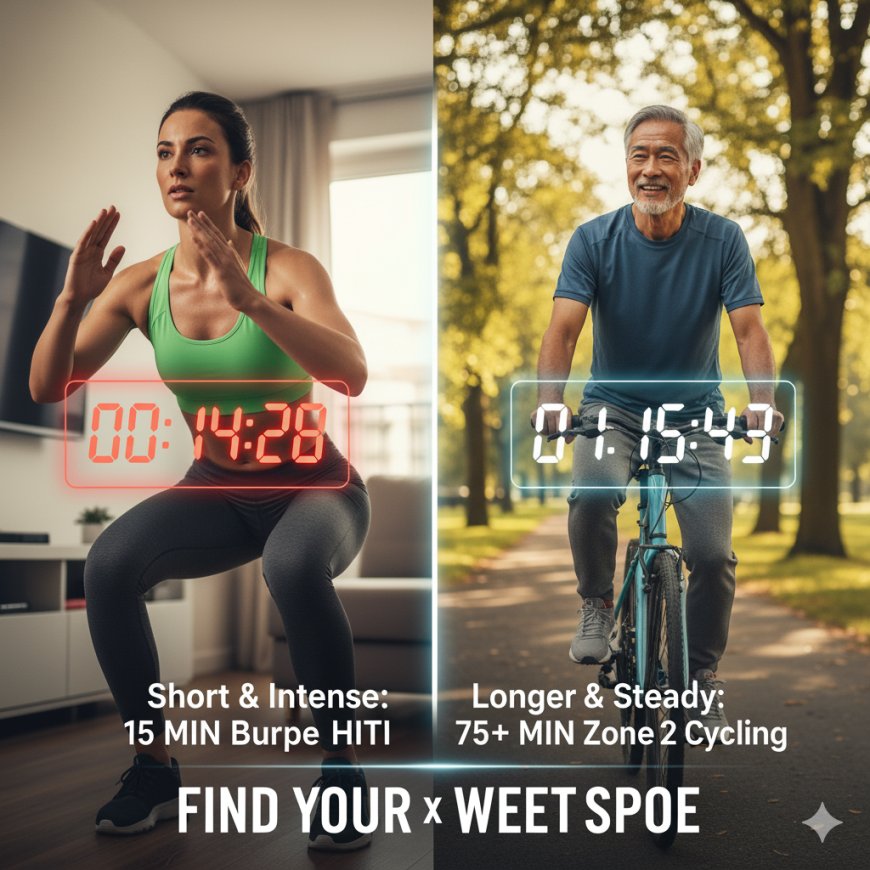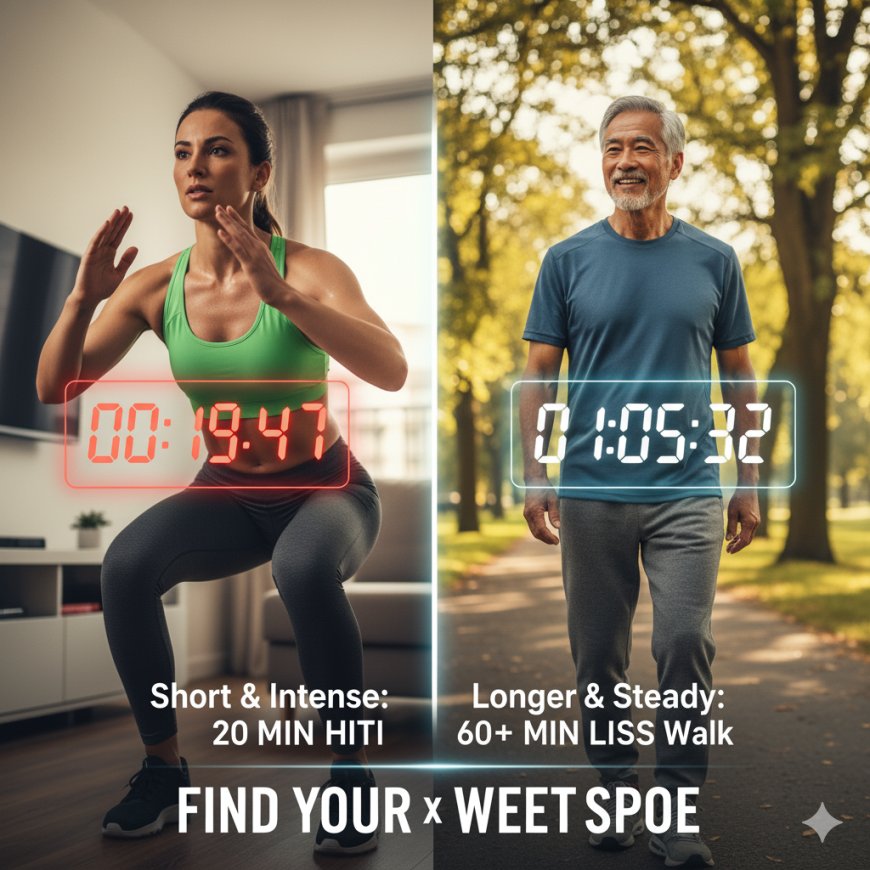How Long Should Your Workout Be? Finding Your Sweet Spot for Fitness
When it comes to exercise, one of the most common questions isn't what to do, but how long to do it. Is a quick 20-minute session enough? Do you need to sweat for an hour and a half to see results? The truth is, there's no single magic number, and the ideal workout duration is more nuanced than you might think.
Instead of chasing an arbitrary time limit, let's explore the factors that genuinely influence how long your workout should be, helping you find your personal sweet spot for effective, sustainable fitness.
The Official Guidelines: A Starting Point
Most major health organizations, like the American Heart Association and the CDC, recommend:
-
150 minutes of moderate-intensity aerobic activity per week (e.g., brisk walking, swimming, cycling).
-
OR 75 minutes of vigorous-intensity aerobic activity per week (e.g., running, HIIT, competitive sports).
-
PLUS at least two days of muscle-strengthening activities per week.
Broken down, this often translates to about 30 minutes of moderate cardio five times a week, or 20-25 minutes of vigorous cardio three times a week, in addition to strength training.

This is a fantastic baseline, but it doesn't account for individual goals, fitness levels, or types of workouts.
Factor 1: Your Fitness Goals
Your desired outcome is perhaps the biggest determinant of workout length.
-
General Health & Longevity: Aiming for the recommended 150 minutes of moderate or 75 minutes of vigorous aerobic activity, plus two strength sessions, is perfectly adequate. These can often be achieved in 30-45 minute blocks.
-
Weight Loss: To create a significant calorie deficit, you might need to lean towards the higher end of the recommendations, or incorporate higher-intensity workouts. A 45-60 minute session combining cardio and strength, or longer cardio sessions, might be beneficial.
-
Muscle Gain (Hypertrophy): Strength training sessions typically last 45-75 minutes. This allows for proper warm-up, multiple sets for different muscle groups, and adequate rest periods between sets. Going much longer can lead to diminishing returns and excessive fatigue.
-
Endurance Training (Marathon, Triathlon): These goals often demand much longer sessions, sometimes 1-3+ hours, particularly for long runs, rides, or swims that mimic race conditions.
-
Performance & Skill Development: A tennis player might spend 60-90 minutes on court drills, while a gymnast's session could be 2-3 hours, including strength, flexibility, and skill work.
Factor 2: Your Workout Intensity
The more intense your workout, the shorter it generally needs to be.
-
High-Intensity Interval Training (HIIT): These workouts are designed to push you to your maximum for short bursts, followed by brief recovery periods. A truly effective HIIT session can be as short as 15-25 minutes (including warm-up and cool-down). Any longer, and you're likely not maintaining true high intensity, or you're risking overtraining.
-
Moderate Intensity Cardio: Brisk walking, light jogging, or leisurely cycling fall into this category. You can typically sustain these for longer durations, such as 30-60 minutes.
-
Low-Intensity Steady State (LISS) Cardio: This includes activities like a leisurely stroll or light elliptical work. These are often performed for 60 minutes or more and are great for recovery or burning calories without high impact.

Factor 3: Your Fitness Level and Experience
-
Beginners: Starting with shorter durations is crucial to avoid injury, burnout, and soreness. Even 15-20 minutes of consistent activity, 3-4 times a week, can yield significant improvements. As your fitness improves, you can gradually increase duration or intensity.
-
Intermediate/Advanced: Experienced exercisers can handle longer and more intense workouts. However, even for advanced individuals, listen to your body and incorporate recovery periods.
Factor 4: Time Availability and Consistency
The "best" workout length is ultimately one you can consistently stick to.
-
If you only have 20-30 minutes: Make it count! A focused, intense 20-minute session is far better than skipping exercise entirely because you couldn't commit to an hour.
-
If you have more time: Great, but don't feel obligated to use every spare minute. Quality often trumps quantity. An extra 30 minutes tacked onto an already effective workout might not provide much additional benefit, and could even lead to fatigue or injury.
The point of Diminishing Returns
There comes a point where working out longer doesn't necessarily mean better results. For most general fitness and health goals, pushing past 60-90 minutes for a typical gym session can lead to:
-
Increased Risk of Injury: Fatigue compromises form.
-
Overtraining: Leading to reduced performance, mood disturbances, and weakened immune function.
-
Cortisol Release: Prolonged stress on the body can elevate cortisol, which can hinder progress and even contribute to fat storage










